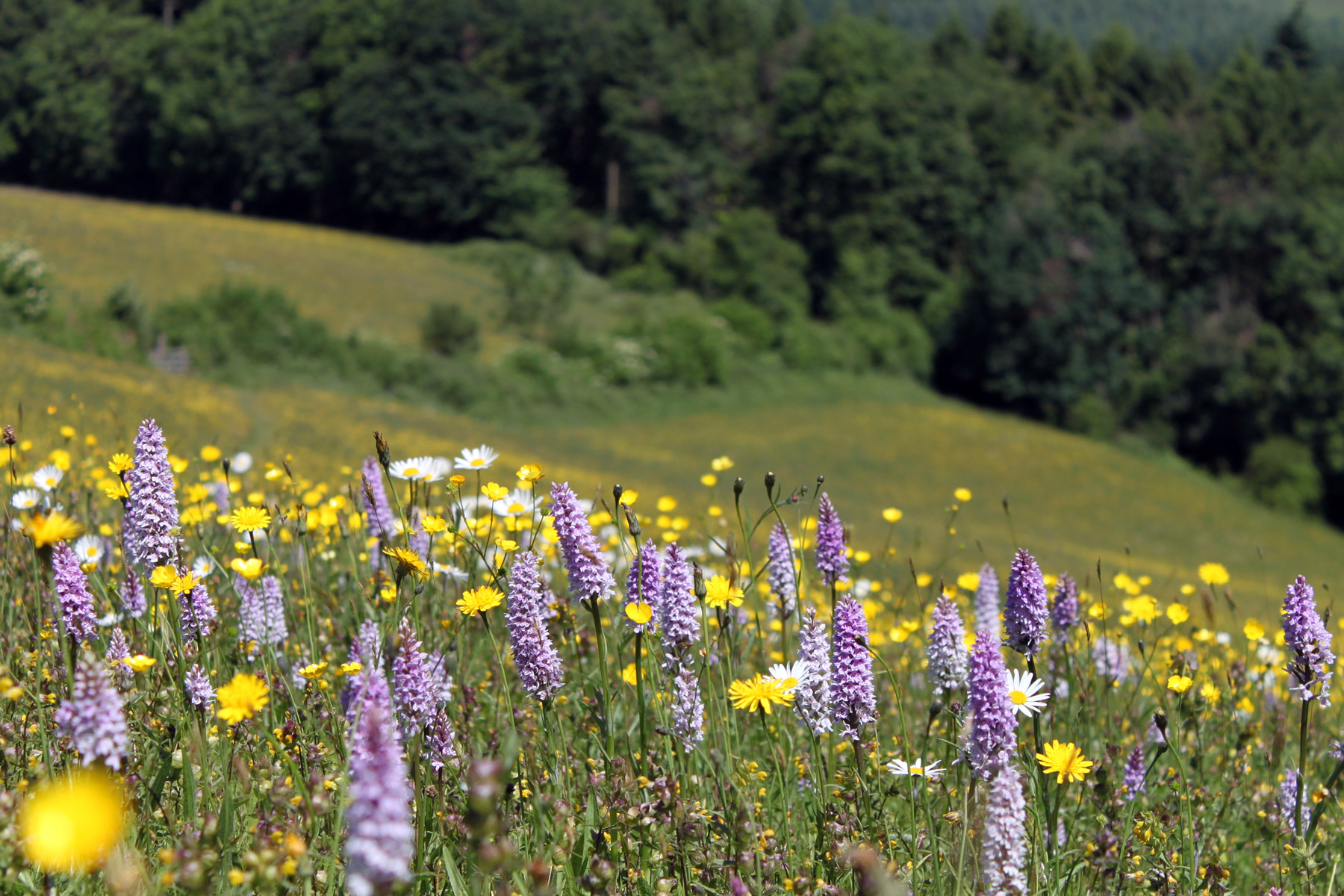Herefordshire Meadows and Worcestershire Pollinator Groups met on the Bromyard Downs on 3rd July for plant ID training led by Stuart Hedley with Sue Holland and Peter Garner. Several members of the Bromyard Downs Commoners Association (BDCA) joined the group as we looked at plants in three different grassland areas on the Common.
Although close together these areas have been managed quite differently over the years. The Common was traditionally grazed but fewer and fewer commoners turned stock out until Foot and Mouth struck in 2001 when grazing ceased. Since then the Top Downs area (stop 1) has been cut infrequently and is now cut annually, the Butts (Stop 2) is cut at a similar time and more recently sheep grazing has been re-introduced. At Well Head (stop 3) the grassland is rougher and is generally the last area to be cut due to it being a wetter and less accessible area.
The list of plants recorded by the groups at each stop shows just some of the species found on this fabulous site.
The group discussed
- the indicator species that give clues about the different grassland zones or habitats on the Common such as tufted hairgrass, rushes and sedges in the wetter area; quaking grass etc.
- How to plan to monitor using quadrats where there are different zones in the field to be recorded. Don’t mix up very different zones together.
- the beneficial effects of grazing generally and especially on the rank grassland, scrub and gorse that otherwise tends to encroach – in helping to maintain a mosaic of grass scrub and trees.
- the importance of recording plants regularly to monitor the progress of grassland before and after changes in management
If anyone wants to help BDCA monitor the plants on the Common as the grazing and mowing management evolves please contact the chair
TO continue improving your plant ID skills with an informal group of people who enjoy botanising in Herefordshire go to BOB facebook page



